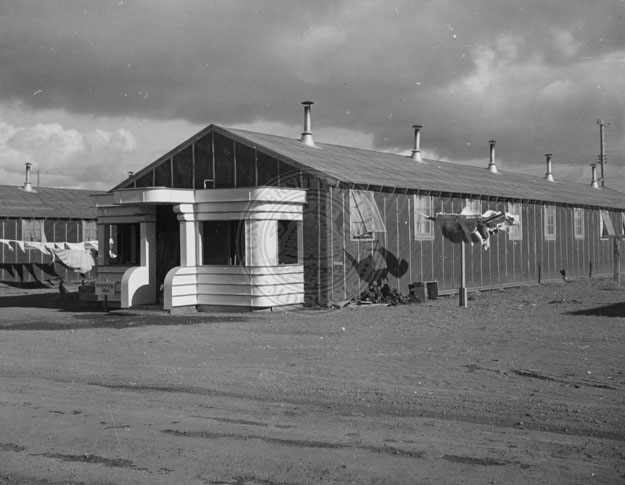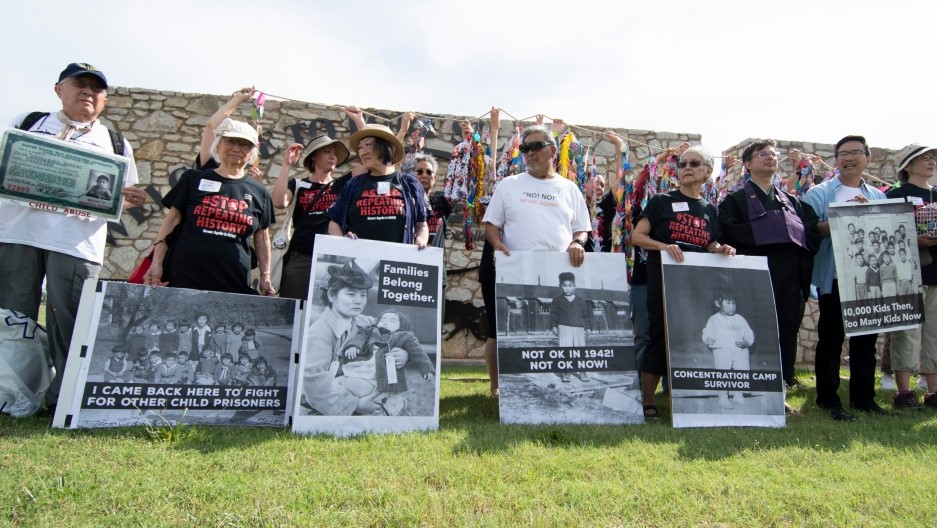By Olivia Cotterman
I have always been interested in the personal side of history. The personal accounts of an event, the artifacts people make, and their diaries and journals. My latest research project has been about the Japanese Internment Camps and the way in which it has been remembered among the survivors. The xenophobia that pushed Japanese Americans into internment camps continues into the present day.
While conducting research I found out many things about the camps themselves and the barracks in which people were forced to live. The rooms were often small, crowded, lacked privacy, and they contained no running water. Japanese Americans were not allowed to bring much with them, so the rooms often lacked in comfort and personal items. People were forced to wait in long lines around the camp for things such as food, showers, and laundry. The camps were also run by the military. They had armed soldiers and large guard towers. Theses towers were used to watch the Japanese Americans and spot anything that might have been considered suspicious activity.

(https://collections.lib.utah.edu/details?id=941510)
While doing my research I came across a place called Fort Sill. In the 1860s and 70s, Fort Sill was used to imprison Native Americans and then during the Second World War, it was used to imprison Japanese Americans. During World War II Fort Sill housed 700 Japanese Americans. Fort Sill also held Native Americans specifically, the Apache tribe and their chief. I was unaware that after the imprisonment of the Japanese Americans ended, the government began looking at using these empty camps for the holding of migrant children. President Trump began to use Fort Sill to hold the growing number of immigrant children. President Trump wanted to use these shelters as a way to show his zero-tolerance policy toward illegal immigration. Fort Sill is being used as a temporary emergency shelter for these children. The number of children being forced to live within these camps has increased, and Fort Sill is not the only child migrant camp.

Due to such an increase in migrant children being detained, the government cannot keep up with the rising housing demand. The living conditions of Fort Sill are very similar to the living conditions of past internment camps. Many of the children are housed in makeshift structures. Some are even living in tents. The increase of migrant children within Fort Sill has caused a lack of resources such as education, legal services, and recreational programs.

Japanese Americans housed within internment camps felt that the mistakes of the past should not become the present. Many of the people that were previously imprisoned within these camps began to protest the use of Fort Sill. They explained it is not okay to continue the history of these camps and imprison more people. Many Japanese Americans created signs that read, “stop repeating history,” “not okay in 1942, not okay now,” and “I came here to fight for other child prisoners.” Many do not want these concentration camps to continue and they expressed that there needs to be an end to such camps.

(https://www.pri.org/stories/2019-06-26/oklahomas-fort-sill-has-history-jailing-minority-groups-migrant-children-could-be)
Conducting this research allowed me to see the connection between Japanese Internment Camps and today. The issue of the camps is still relevant and often people do not remember this part of history. However, Fort Sill is a continuous reminder of a dark past.